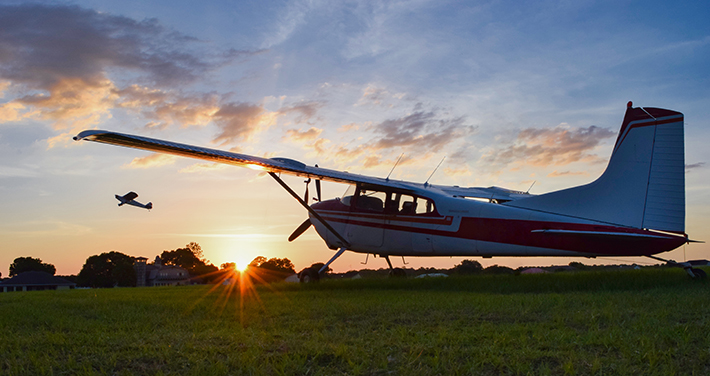
Parachute Standard Supports a Safe Landing
It is a sobering reality for pilots and passengers alike that there are limits to what can be done to save an airplane experiencing difficulties during a flight.
Over the years, this has led to the development of many different types of aircraft safety systems, including structural redundancies, pilot ejection systems, supplemental oxygen, and more. However, one of the most effective solutions to reduce small aircraft crashes is also one of the newest: the parachute recovery system.
Designed in the 1980s and first implemented in 1997, these systems are effectively whole-aircraft parachutes. When deployed, such a system enables a pilot to safely lower the plane to the ground in the event of an emergency. Given the size limitations of the technology, these systems are typically only useful for small aircraft, but they have proven popular, as well as life-saving.
READ MORE: The Air Taxi Lifts Off
A 2017 National Transportation Safety Board (NTSB) study looked at 268 small aircraft accidents occurring between 2001 and 2016. Of the 211 instances in which the plane did not have a parachute recovery system, 82 ended in fatalities. Of the 57 instances in which the plane did have such a system, 8 fatalities resulted.
Streamlining Development
In light of the growing popularity of these systems, ASTM International recently released a new standard that outlines the “minimum requirements for designing, manufacturing, and installing emergency parachute systems that help recover a small plane’s airframe, potentially helping occupants survive.” Developed by the general aviation aircraft committee (F44), the standard specification for aircraft emergency parachute recovery systems (F3408) is aimed at recovery system designers and manufacturers, as well as aircraft designers, and is intended to simplify the market greatly.
“The parachute standard was proposed by Cirrus because, in the past, we have designed and developed parachute systems for our aircraft,” explains Jay Yeakle, a member of F44 who also serves as an administrator at Cirrus Aircraft. “But in each of those instances, it also required that a special condition be developed with the FAA in order to come up with rules that were applicable to each system. In other words, it takes quite a bit of time and effort, both for ourselves and for the FAA, to put together these special conditions. Now that ASTM has taken over many of these rules, we introduced this standard so that people could certify a system without having to go through the special condition route with the FAA.”
Certifying a new aircraft through the FAA requires navigating a series of existing rules and regulations. According to Yeakle, For those types of products that are not covered by a current regulation, manufacturers and designers will typically work with the FAA to create an issue paper explaining the need, which can lead to the FAA creating what is called a special condition. Once that special condition is approved and a final version published by the FAA in the Federal Register, it becomes a rule for that product.
The development of this standard will allow parachute recovery system designers to avoid the special condition process for these types of products.
Setting a Baseline
The specification covers the minimum requirements for the design of emergency parachute recovery systems, with an eye toward recovering the airframe and protecting its occupants at a slower, survivable rate of descent. This includes strength requirements for the materials used, a test method for the parachute itself, and the use of existing standards for the activation system, deployment system, parachute attachment, occupant protection, and system verification.
“The size of the aircraft that you're designing it for is a huge factor,” Yeakle says. “These designs are very much based on what airplane it is being used, how fast it goes, how high it goes, how heavy it is, and of course, how slowly you want it to come down. All of those things play a part in developing the design of the parachute and the parachute system.”
For now, commercial aircraft simply move too fast, travel too far, and are too heavy for parachute recovery systems. However, the development of future related standards will continue.
“There may be work in the future to look at how we could incorporate these types of systems into some of the eVTOL [electric vertical takeoff and landing] aircraft that are coming through,” says Yeakle. “The committee is making provisions for some of these new air taxis that are being developed right now, so it is possible that this standard could be expanded to cover those kinds of applications as well.”
 SN Home
SN Home Archive
Archive Advertisers
Advertisers Masthead
Masthead RateCard
RateCard Subscribe
Subscribe Email Editor
Email Editor